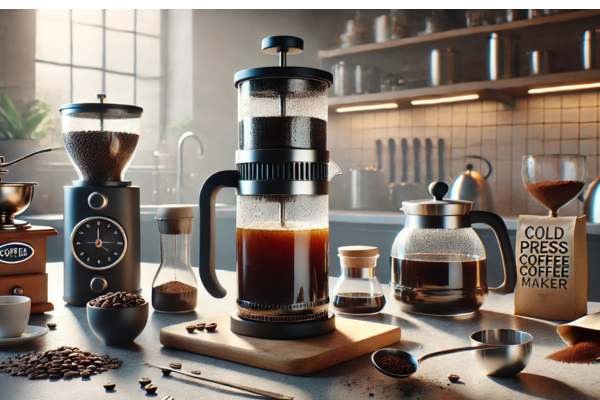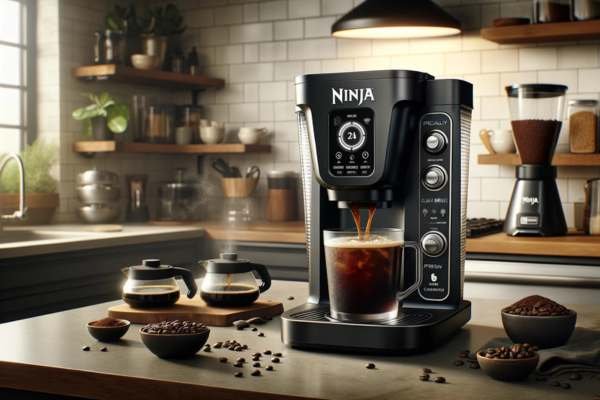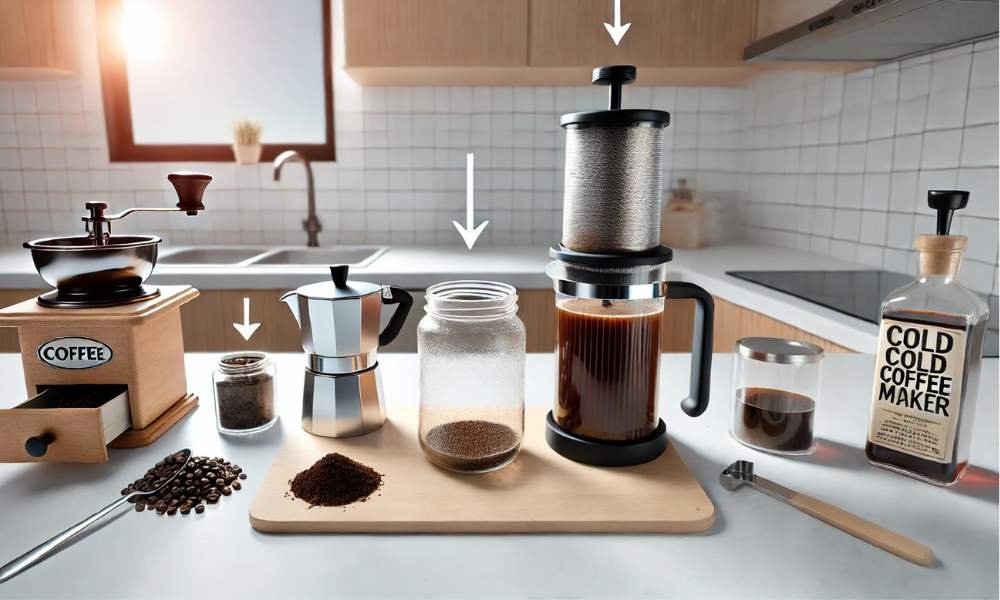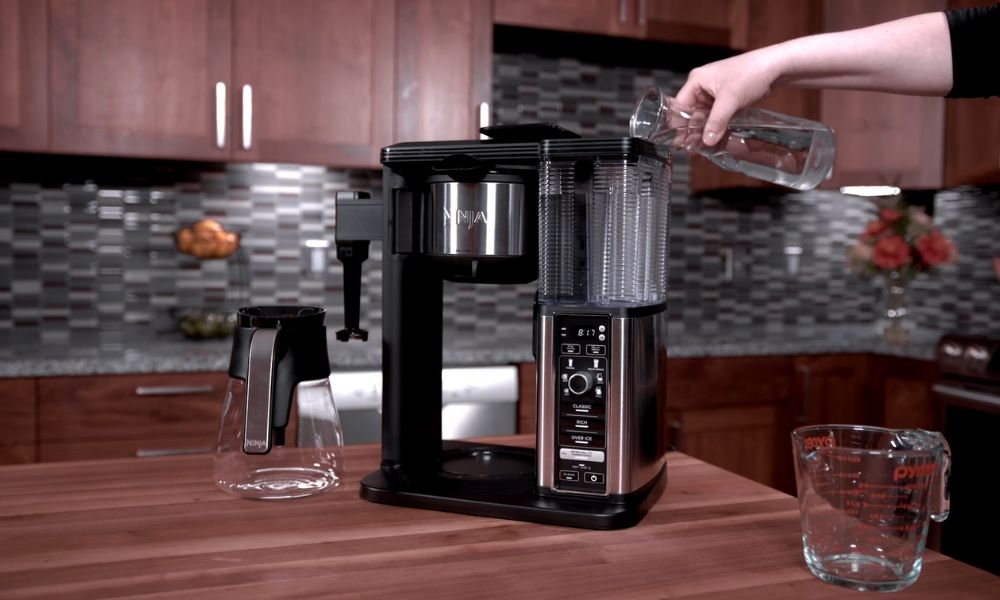Mastering how to use a cold press coffee maker can elevate your home coffee experience to an entirely new level. Cold press coffee, celebrated for its smooth, rich flavor profile and low acidity, is crafted through a slow extraction process that draws out deep, robust flavors. Whether you’re a pro coffee enthusiast or new to brewing, this manual will stroll you through every step of the use of a chilly press espresso maker, from selecting the right beans to mastering the brewing method. By informing the essentials of bloodless press brewing, you’ll quickly be capable of enjoying a café-great cup within the comfort of your property, savoring every sip of this clean, full-bodied espresso. So, allow’s dive in and explore the artwork of cold press espresso making, reworking your everyday coffee ritual into an amazing experience.
Understanding Your Cold Press Coffee Maker

A cold press coffee maker, also known as a cold brew maker, works by gently steeping coarse coffe grounds in cool water for a prolonged period, usually 12 to 24 hours. This slow, patient process allows for an extraction that teases out flavors lost in the flash-heating of hot brewing methods. With options ranging from straightforward manual presses to sophisticated programmable devices, the variety is plentiful. Each style has its unique strengths, so the choice ultimately comes down to personal preference and the level of control you seek over your brew.
Choosing The Right Coffee For Cold Press

The coffee you select is integral to the quality of your cold press brew. Typically, medium to dark roast beans are preferred, as their robust, full-bodied flavors stand up well to the cold brewing process. Light roasts, while delightful in hot brewing, often lack the depth and richness needed for cold press coffe. Look for beans that promise notes of chocolate, nuts, or caramel—they meld beautifully with the cold extraction, creating a harmonious cup that is both smooth and complex.
Selecting The Best Coffee Beans For Cold Press

Freshness is paramount when it comes to cold press coffee, so aim for whole beans roasted within the past two weeks. Whole beans, rather than pre-ground coffe, ensure a fresher taste that is true to the beans’ unique flavor profile. For an extraordinary experience, try single-origin beans, which often carry distinct, nuanced flavors. These beans turn each brew into a miniature exploration of the coffe’s terroir, offering a depth of character that’s hard to replicate with blends.
Getting Familiar With The Control Panel

If your cold press coffee maker includes a control panel, getting to know it can greatly enhance your experience. Many modern machines come equipped with features that allow you to fine-tune your brew, such as adjustable steeping times, strength settings, and even options for various brewing methods. Spend a few moments familiarizing yourself with these controls; understanding the settings will help you craft a brew that aligns with your flavor preferences, whether you crave a lighter, more delicate coffe or a bolder, more intense cup.
Using The Ninja Specialty Brew Function

The Ninja Specialty Brew feature is an excellent tool for cold press aficionados. This function allows you to adjust the concentration and type of brew, delivering a customizable experience with each batch. Experiment with different settings to find the perfect balance for your palate. You might find yourself adjusting the strength on some days, creating a richer, almost syrupy brew, while on other days, you might go for a lighter, more refreshing taste.
Add Coffee To The Filter Basket

Precision is key to unlocking the full potential of cold press coffee. Generally, cold press requires more coffee grounds than hot brewing, as the slower extraction process benefits from a higher concentration of grounds. Use a scoop to measure and add your coffe grounds to the filter basket, ensuring an even layer. A uniform layer not only looks neat but also contributes to an even extraction, which in turn produces a consistent, balanced flavor.
Preparing Your Cold Press Coffee Maker
A well-prepared coffee maker is the first step to a flawless brew. Start by giving the components a quick rinse to remove any lingering dust or residues from previous uses. Place the filter basket inside the machine, then carefully measure your coffe grounds, pouring them into the basket. Certain models may require you to engage specific parts, like a drip-stop valve or a timer, so be sure to follow any setup steps unique to your machine before beginning the brew.
Step-By-Step Guide To Using A Cold Press Coffee Maker
1. Measure the Coffee Grounds: Add a generous portion of coarsely ground coffe to the filter basket.
2. Add Cold Water: Pour cold or room-temperature water over the grounds, ensuring they are thoroughly saturated.
3. Stir Gently: Give the grounds a gentle stir to encourage even water distribution.
4. Steep: Place the lid on your coffe maker and let the coffee steep. Depending on your taste preference, steeping can range from 12 to 24 hours, typically in the refrigerator.
5. Filter the Coffe: After steeping, use the filtration system to strain the coffe, removing the grounds.
6. Serve and Enjoy: Pour the coffee over ice or add milk, cream, or a sweetener of your choice for a truly indulgent experience.
Brewing Cold Press Coffee Step-by-Step Guide
To start, combine your coffee grounds with cold water, stirring to ensure every granule is soaked. With manual models, cover the top and let it rest in the refrigerator for the recommended steeping time. Automated machines may allow you to set a precise steeping time, taking the guesswork out of the process. Once ready, the machine will prompt you to filter the coffe, leaving you with a smooth, flavorful brew.
Adding Coffee And Water To Your Cold Press Coffee Maker
Maintaining the right coffee-to-water ratio is crucial for achieving a balanced cold press brew. Most recipes suggest using a ratio of 1 cup of coffe to 4 cups of water. For a stronger concentrate, reduce the water slightly. Pour the water over the coffee grounds in a slow, circular motion, allowing it to evenly soak the grounds. This attention to detail ensures a more uniform extraction, which is the secret to a consistently delicious cup.
Cleaning And Maintaining Your Cold Press Coffee Maker
Regular maintenance not only extends the life of your Clean Nespresso coffee maker but also keeps your coffe tasting fresh. After each brew, disassemble the machine and rinse all components with warm water. Use a mild detergent to remove any stubborn coffee oils, especially in the filter basket, as buildup can alter the taste of future brews. Consider descaling your coffe maker once a month if compatible, as this removes mineral deposits and keeps it functioning optimally.
FAQs
- Can You Use Pre-Ground Coffee for Cold Press?**
Absolutely, though freshly ground beans will elevate the flavor. If you opt for pre-ground coffee, aim for a coarse grind similar to sea salt. This prevents over-extraction and the murky, cloudy brew that can result from finer grinds.
- What’s the Best Coffee Grind Size for Cold Press?**
A coarse grind is ideal for cold press brewing. The grounds should resemble breadcrumbs or coarse sea salt, which allows water to flow smoothly around the grounds and results in a clean, flavorful extraction. Finer grinds can lead to a sludgy texture and may clog the filter.
Conclusion
Mastering the art of using a cold press coffee maker is a simple way to elevate your coffee experience. By following the steps outlined, you’ll enjoy the bold, smooth flavor that only cold brew can offer, all from the comfort of your home. Whether you’re looking for a refreshing summer drink or a chilled pick-me-up, this method is perfect for achieving consistent, delicious results every time. Experiment with different coffee beans and steeping times to find your ideal taste, and enjoy the convenience and satisfaction that comes with homemade cold brew. Now, it’s time to grab your cold press coffe maker and start brewing!



